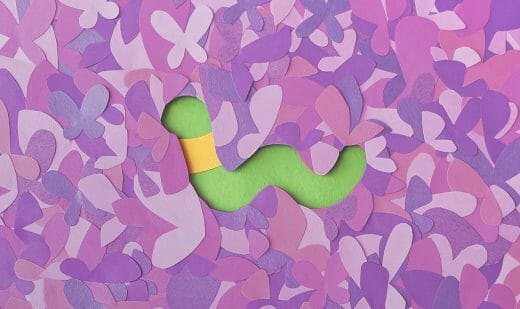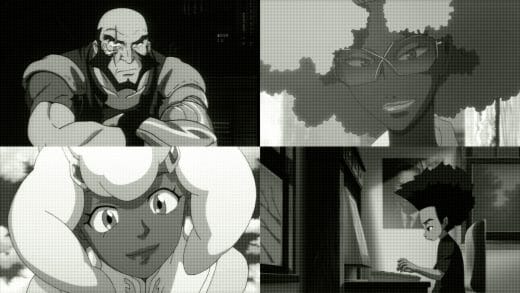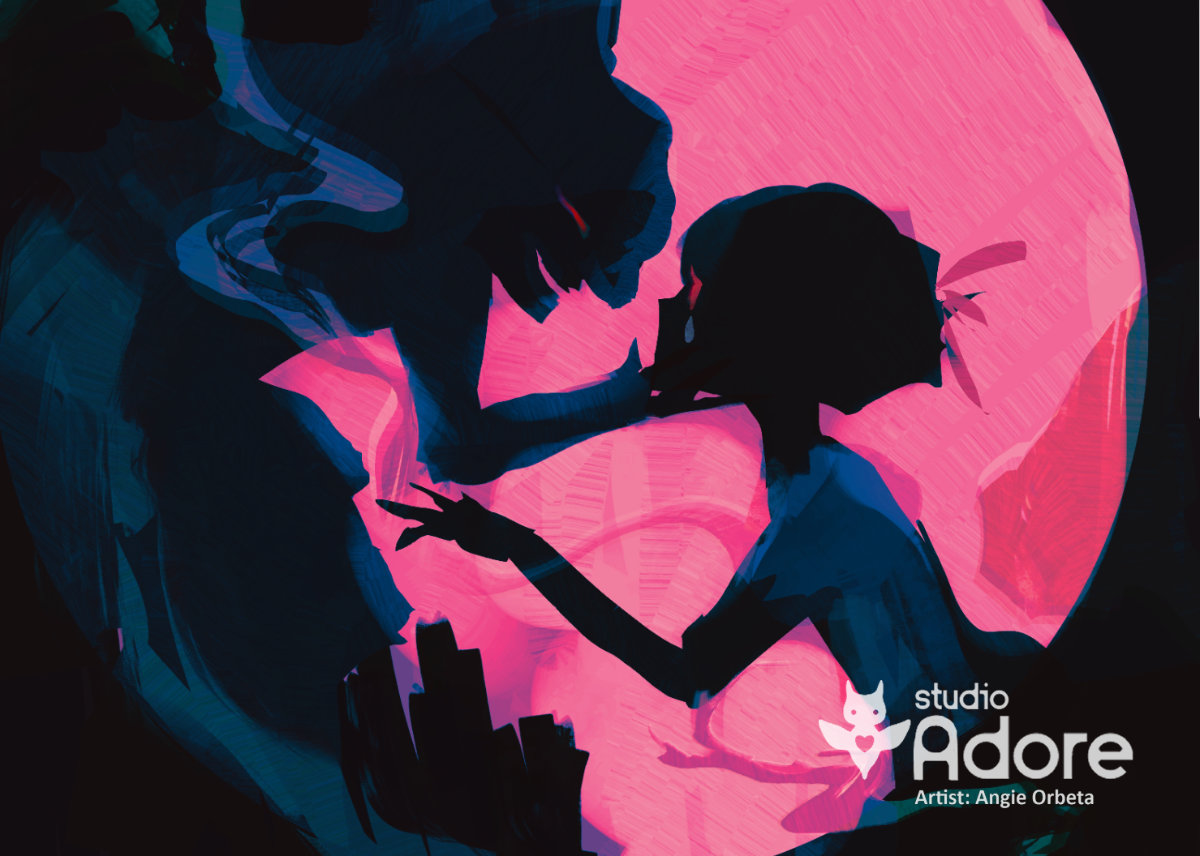
In Studio Adore’s first short, The Changeling, a young woman’s life changes forever when she discovers that she isn’t human. She’s a fairy, switched with a human child as a baby. And now that human child, all grown up, is coming to take her life back. What ensues is a sapphic love story unlike anything developed for Western audiences, blending romance with horror and fantasy elements.
Studio Adore is looking for funding to create The Changeling, currently in development. We invited Studio Adore’s co-founders Angie Orbeta and Mikey Cao to discuss their perspectives on indie animation, Asian representation in media and using the fantastical to delve into real-world experiences.
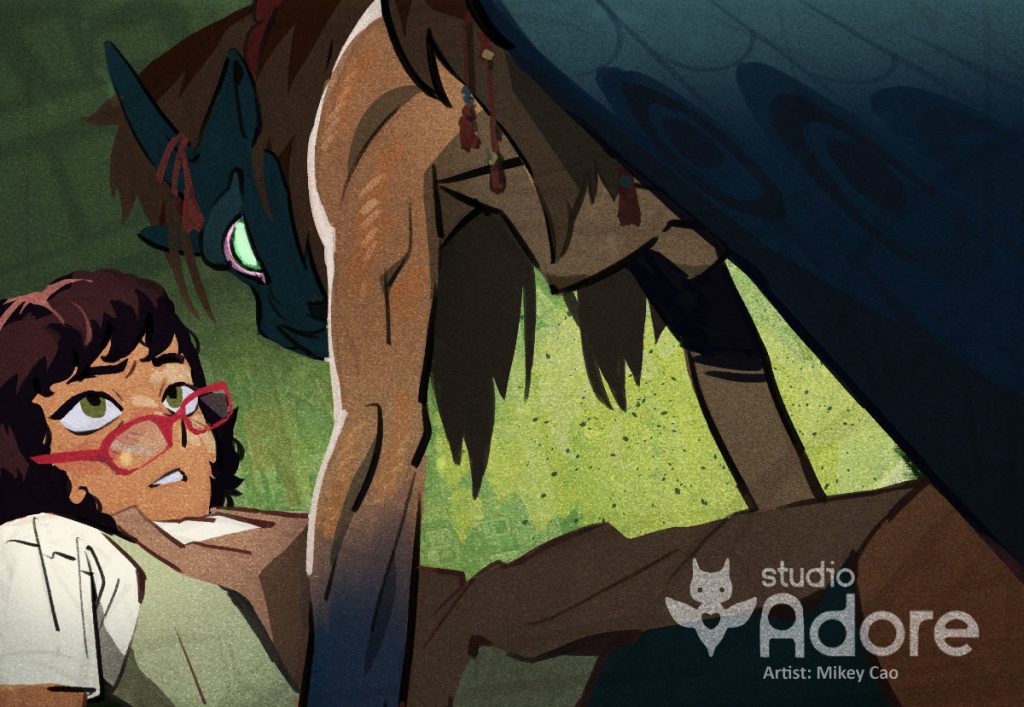
What got you both into animation? What have your careers looked like up to this point?
Mikey: I was always an artsy kid. You know how it is. I drew a horse in Pre-K. And then in classic, blunt, Chinese mom fashion, my mom was, “What is this?” I was like, “It’s a horse?” And she’s like, “It doesn’t look like one.” And I got so enraged as a five-year-old, and it drove me with so much energy to just continue my art journey. I said, “I’m going to draw a horse so good she can’t deny it’s a horse!” And that’s where it all started.
I studied animation and computer graphics. Coming from Atlanta, I moved to Seattle. And now I’m an animator and producer.
Angie: My background is in 3D animation. But before I got into that, same as Mikey, I was always the art kid in school. And then I thought more about what I actually wanted to do for a career. I saw student films on YouTube, and I found out more about art schools.
I realized that college wasn’t for me. So instead, I went to AnimSchool and did that for two years, and I completed the whole feature film program. Then I got my start in the industry on a TV series at Icon Creative Studio up in Vancouver. I’ve also interned at Pixar. After that I did some freelance stuff.
Currently, I’m trying to learn more and broaden my animation skills. I’m trying to learn game animation instead of only making films. So that’s where I’m at right now.
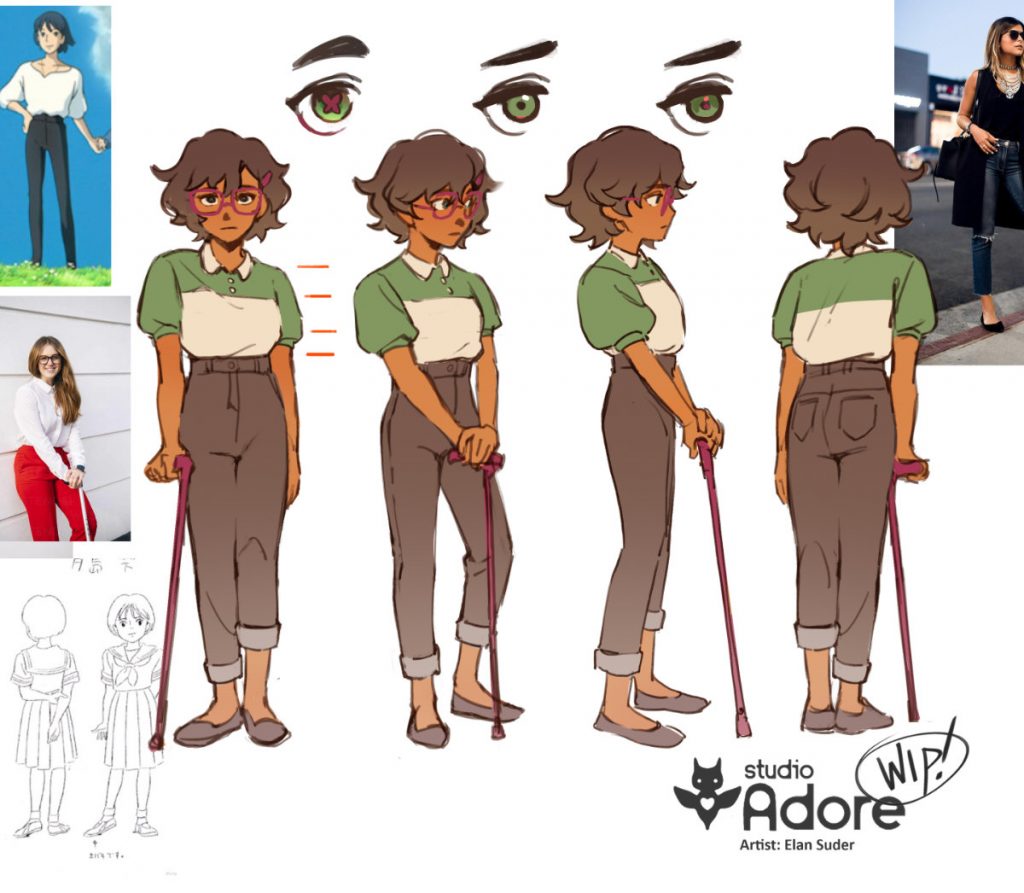
When did you decide to found Studio Adore?
Mikey: It was June last year [2024], really a peak of hard times in the industry. I think we’re still seeing that. It’s harder and harder for younger people in the industry to get a foot in the door – and even for someone like Angie who’s already gotten that foot in the door.
It came to a point where, you know, I was doing a lot of reflection, and some people inspired me. I felt I’d rather spend that time challenging my energy to build something bigger than me, and something that I could look back on.
Angie: Mikey approached me about trying to do a short film. I’ve always liked other parts of the pipeline, like vis dev and storyboarding. And I always thought that was very cool. I wanted something more of a creative outlet to do that other stuff. The Changeling was the chance for me to do that.
Mikey: And I just wanna say it’s been awesome working together.
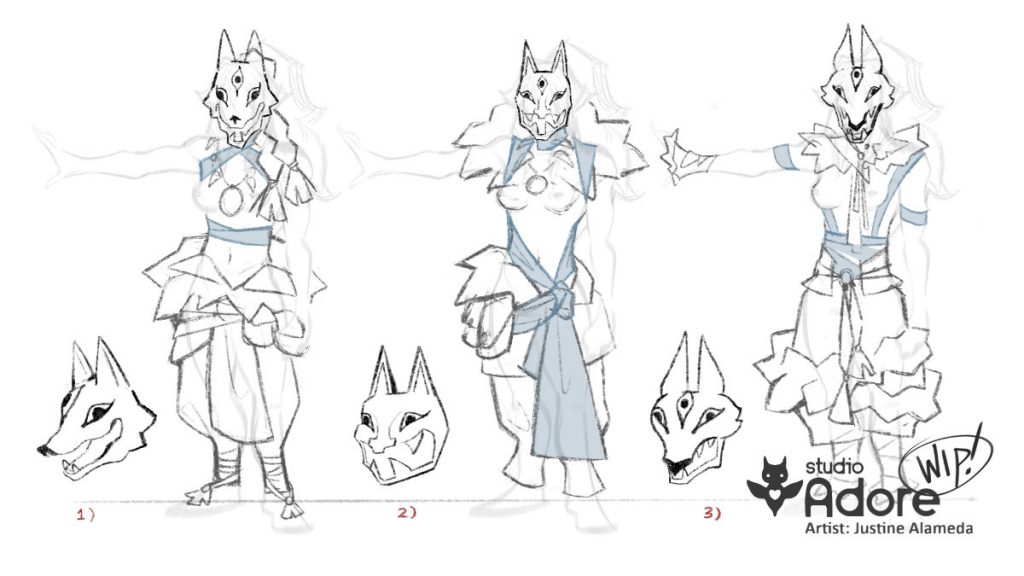
You describe The Changeling as a “shoujo-inspired horror-fantasy.” What drew you to creating a film in those genres?
Mikey: To start with, it’s a great representation of the both of us and our synergy. I remember Angie suggested the shoujo. And I suggested the horror deconstruction, because I’m a big fan of shows like Puella Magi Madoka Magica.
I love stories that start out seemingly innocently, but then they become horrifying once you delve into it. But I’ll let Angie tell you all about the shoujo, and where we started with that. There was a lot of research.
Angie: Yeah, I come from a similar background in terms of interests. When I was younger, I was really into watching indie horror game playthroughs on YouTube. They have the vibe of starting with mundane slice-of-life aspects. Then there’s something weird or off-putting, and it dips more into horror. I always like when things balance both.
More recently I’ve been getting into slice-of-life shoujo. I feel you get more time to just enjoy the characters, and just enjoy the smaller things in life. So some of the first inspirations for our story came from classic shoujos, Kimi ni Todoke, and Princess Jellyfish. And then also we both like Ghibli. So things like Spirited Away were also a big influence, and that has the fantasy aspect. Other titles like Howl’s Moving Castle, and Princess Mononoke are all using the same genres that we’re both inspired by.
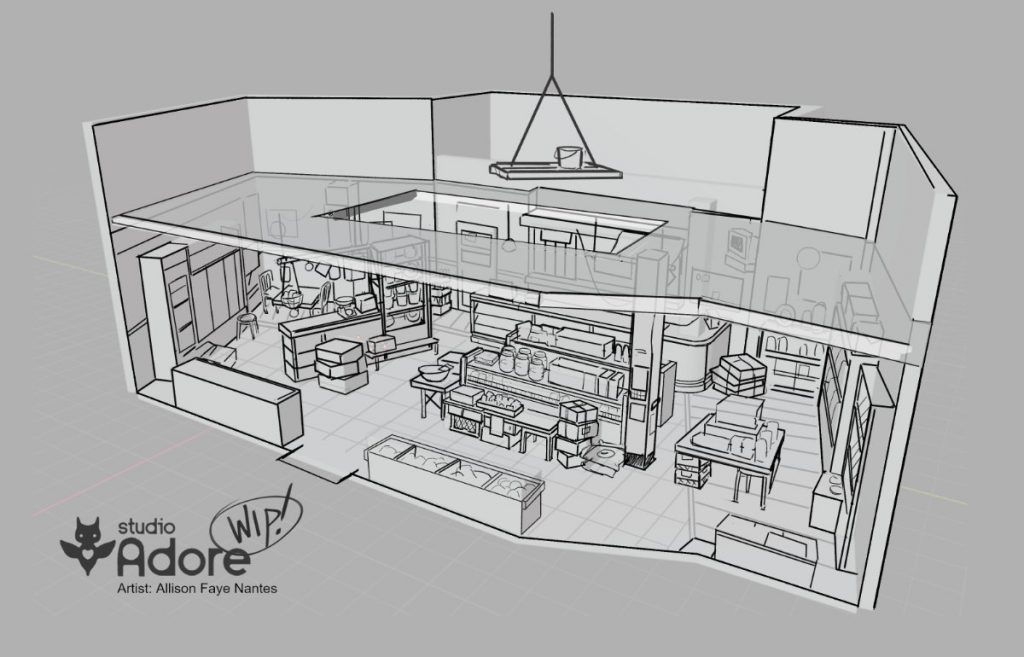
There seems to be a rising trend of North American productions taking inspiration from anime.
Mikey: Yeah, absolutely. It’s really interesting. We’ve seen the same thing more in the indie sphere. There was almost that resurgence of East Asian culture in Hollywood with Crazy Rich Asians, and then Everything Everywhere All At Once sweeping the Oscars. So I think it might be on the tail of that. Now it’s hitting animation. It’s definitely really cool to see.
As for us, it’s really awesome to get to dig into the folklore of it all. Our audience is still very Western. It’s a blending of two cultures. So there’s the changeling tale, and then we’re additionally referencing foxes, which have a lot of prevalence in East Asian mythology. And we’re referencing Southeast Asian folklore, predominantly Filipino folklore, such as the manananggal. And that’s really cool, because it’s a lady with wings. And then her torso detaches from her bottom half, and it’s really sick.
Angie: We’re working on character design right now. For one of our characters, we’re pulling from Filipino pre-colonial attire. We don’t see that as much [in media]. And the themes of the movie include not knowing where you belong, or feeling like you’re caught between two different worlds. Some shows about Asian immigrants, like Kim’s Convenience and Fresh Off the Boat, talk about that a little bit.
Mikey: We also talk about vibrant immigrant communities and how they organize. We’re drawing a lot of inspiration from The International Hotel, also called the I-Hotel, in San Francisco’s Manilatown, and the Yick Fung Co building in Seattle, which was an import-export store. It’s amazing to dive into the history of that. And, you know, for anyone reading this, I’d highly encourage you to visit if you can, or read about it.
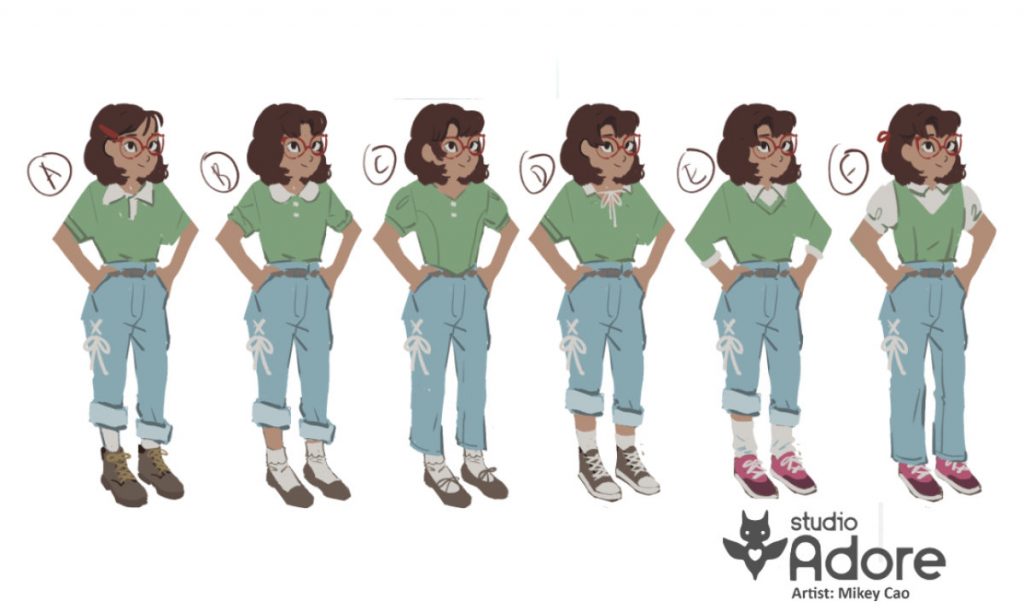
There’s also the prominent theme of being othered, and how people cope with it.
Mikey: Yeah. Maria is biologically a fairy, but she doesn’t know it. She’s being othered but it’s kind of unspoken. Then there’s Morpho, who’s the human, trying to wear a mask and wings to fit in with where she was raised; with fairies.
You’re just yourself, and you don’t at first know why you would be any different from anyone else. And then you grow up and you go through the world, and you’re able to contextualize your experiences more and more, until one day you understand. That feeling under your skin that you could never shake. And then it all kind of makes this horrible sense.
Morpho’s sick of it. She’d say, “I want to see what else there is. What if my life had been ‘normal?’ What if I had the family I was born into?” Which can be flawed as an ideology in its own ways. And then she comes in, and she tries to take Maria’s place. But of course they fall in love instead. I’m really excited for that, because they’re both in their mid-twenties. It’s not a high school love story.
It’s never too late to feel that you’re waking up, because someone finally saw you. One of our log lines that we have on our page is, “A love that finally saves you,” because that’s something that resonates with me a lot.
That’s such a refreshing plot twist! How far are you into the production process?
Angie: We’re still researching and figuring out the specifics in the story right now. The biggest highlight of this project is that we get to work with other people and see our story evolve, and see how the characters change. We get to see them change in ways that we wouldn’t have thought of ourselves if it was just us doing it. We have artists coming from all over the continent, coming from different experiences. So that’s been really cool.
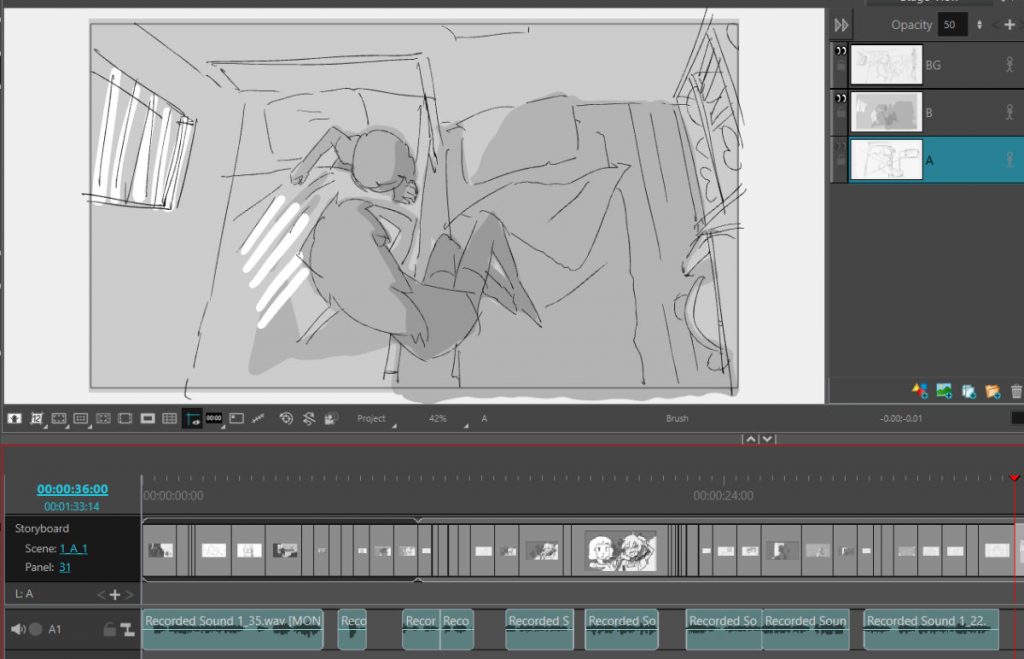
What has your experience with Toon Boom’s software been like on this production so far?
Mikey Cao: Right now, we’re mostly using Storyboard Pro. We’ll get to Harmony once we hit production. But I’ve worked with Harmony before and it was awesome. I was honestly impressed with its range of capabilities for rigged and hand-drawn animation.
We were using Storyboard Pro for the first draft of the trailer back in November, and it was really great. I was a little hesitant to try the audio feature at first, but then it was super easy to record scratch audio. It freed up my workflow and made putting up WIPs so much easier.
So Toon Boom’s definitely been super helpful and holding up to the demands and challenges of the project. And the Apply to All Frames button for coloring? Under-rated.
- Check out Studio Adore’s fund proposal for The Changeling on their Playbook page, and follow Studio Adore on Instagram and Bluesky for project updates.
- Studio Adore is currently looking to hire writers, look development artists, and communications generalists. They can be reached on the socials listed above.


